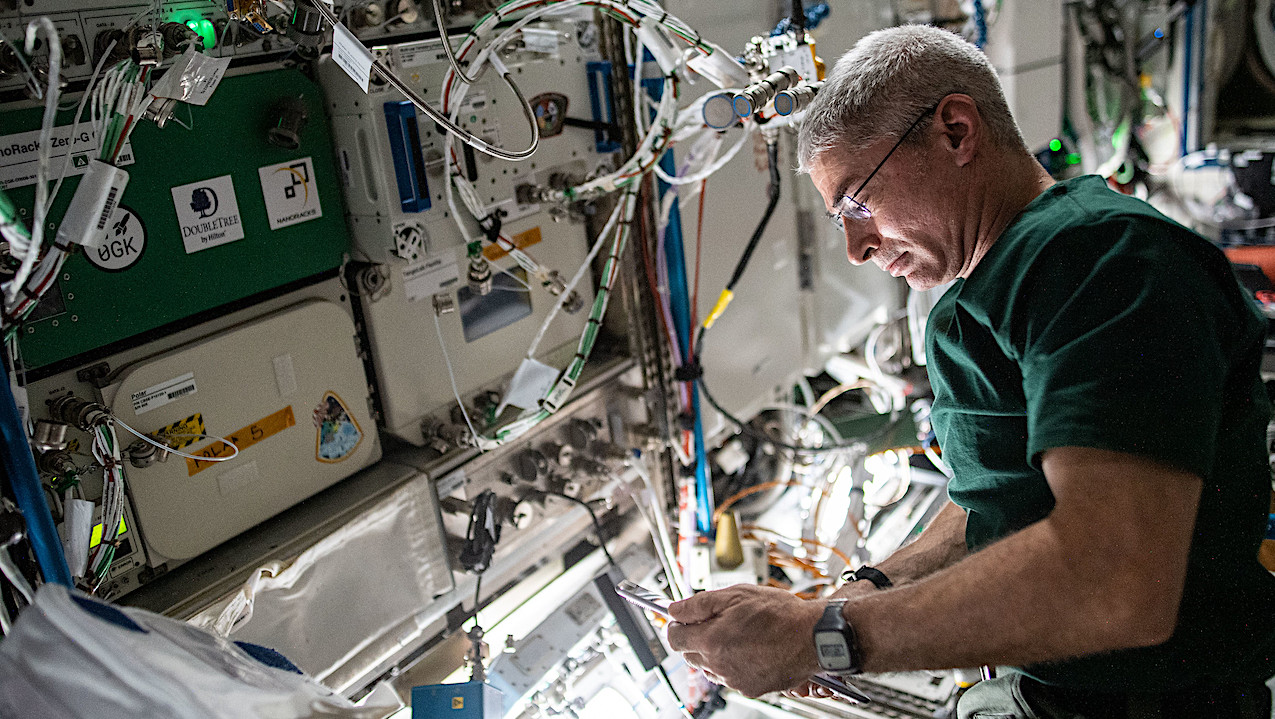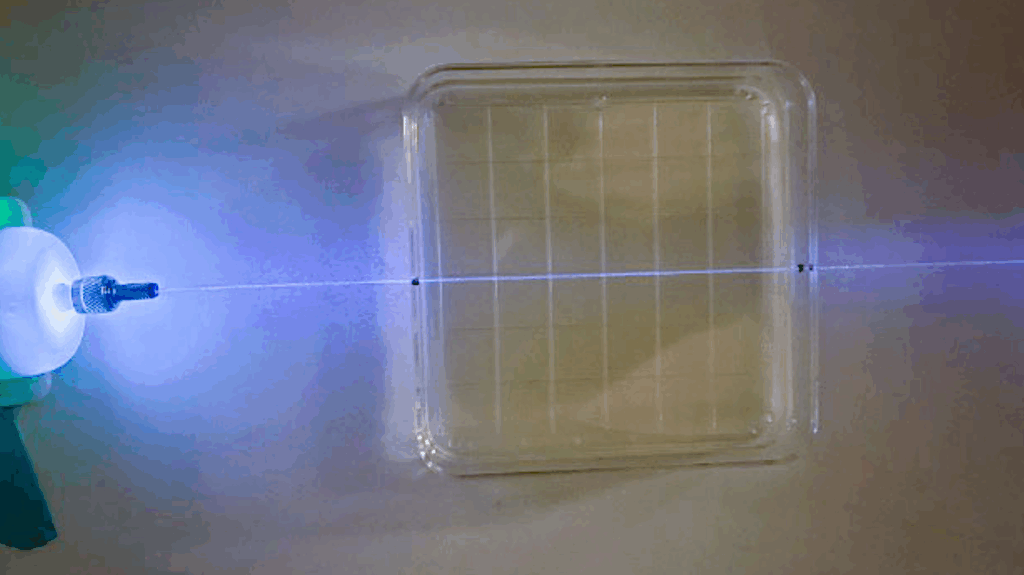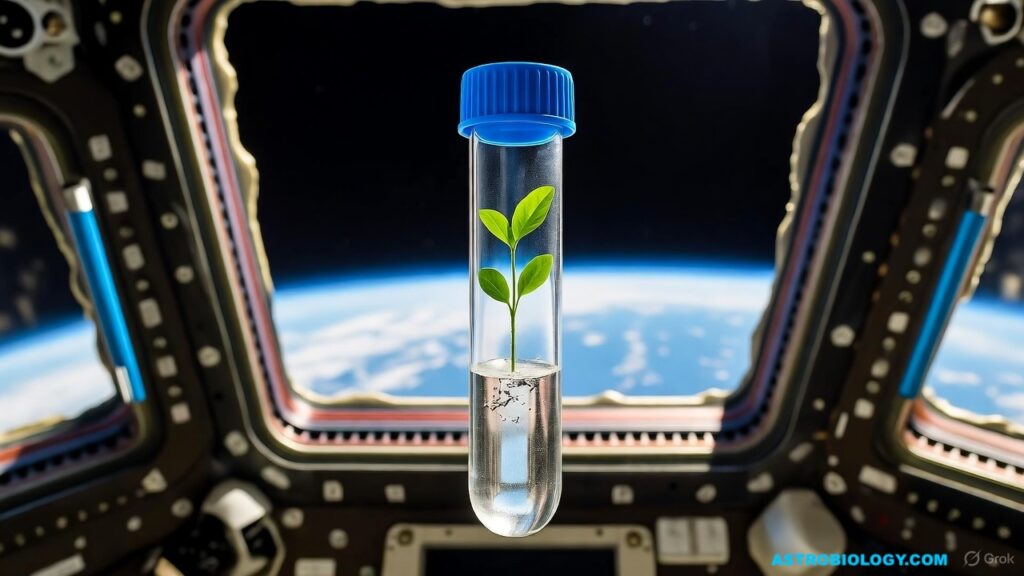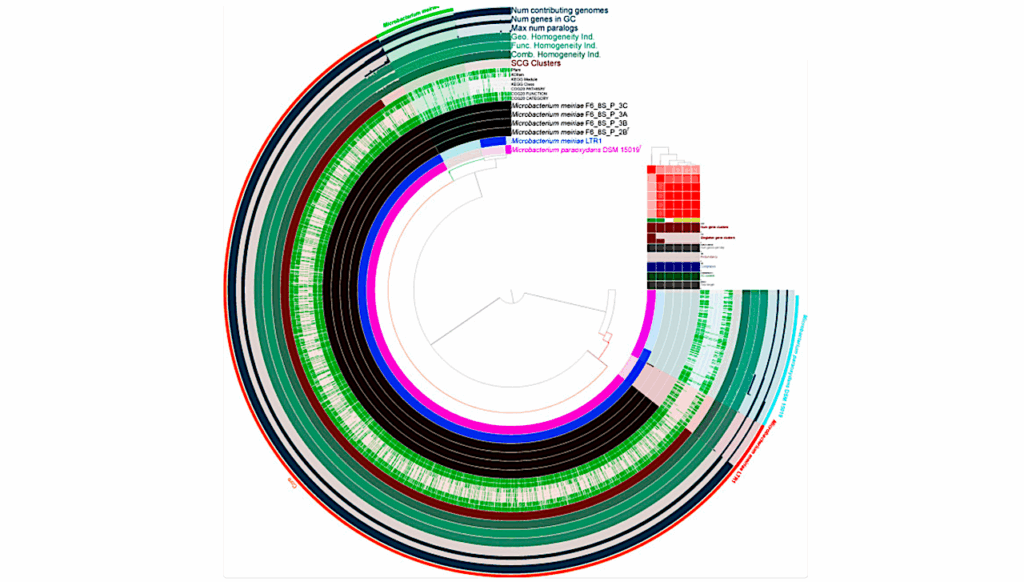NASA Spaceline Current Awareness List #1,118 4 October 2024 (Space Life Science Research Results)

NASA astronaut and Expedition 65 Flight Engineer Mark Vande Hei works to relocate the Multi-use Variable-g Platform (MVP) inside the Kibo laboratory module. The MVP is a space biology research platform that can produce up to 2 g of artificial gravity housing samples such as fruit flies, flatworms, plants, fish, cells, protein crystals and many others. Larger image
The abstract in PubMed or at the publisher’s site is linked when available and will open in a new window.
Papers deriving from NASA support:
- Szydlowski LM, Bulbul AA, Simpson AC, Kaya DE, Singh NK, Sezerman UO, Łabaj PP, Kosciolek T, Venkateswaran K.Adaptation to space conditions of novel bacterial species isolated from the International Space Station revealed by functional gene annotations and comparative genome analysis.Microbiome. 2024 Oct 4;12:190.PI: K. VenkateswaranNote: ISS results. This article may be obtained online without charge.
Journal Impact Factor: 13.8
Funding: “Part of the research described in this publication was carried out at the Jet Propulsion Laboratory, California Institute of Technology, under a contract with National Aeronautics and Space Administration. This research was funded by a 2012 Space Biology NNH12ZTT001N grant no. 19-12829-26 under Task Order NNN13D111T award to KV.” - Patterson JS, Rana BK, Gu H, Sears DD.Sitting interruption modalities during prolonged sitting acutely improve postprandial metabolome in a crossover pilot trial among postmenopausal women.Metabolites. 2024 Aug 30;14(9):478.PI: B.K. RanaNote: This article is part of Special Issue “The Emerging Role of Metabolomics in Epidemiological Studies of Atherosclerosis and Cardiovascular Disease” (https://www.mdpi.com/journal/metabolites/special_issues/8194S1V66Y) and may be obtained online without charge.
Journal Impact Factor: 3.4
Funding: “Primary funding for this study was provided by NASA Grant # NNJ14ZSA001N (BKR) and a grant from the National Institute of Aging (P01 AG052352) (JSP, DDS). …” - Yates K, Berliner AJ, Makrygiorgos G, Kaiyom F, McNulty MJ, Khan I, Kusuma P, Kinlaw C, Miron D, Legg C, Wilson J, Bugbee B, Mesbah A, Arkin AP, Nandi S, McDonald KA.Nitrogen accountancy in space agriculture.npj Microgravity. 2024 Sep 28;10:90.Note: From the abstract: “Food production and pharmaceutical synthesis are posited as essential biotechnologies for facilitating human exploration beyond Earth. These technologies not only offer critical green space and food agency to astronauts but also promise to minimize mass and volume requirements through scalable, modular agriculture within closed-loop systems, offering an advantage over traditional bring-along strategies. Despite these benefits, the prevalent model for evaluating such systems exhibits significant limitations. It lacks comprehensive inventory and mass balance analyses for crop cultivation and life support, and fails to consider the complexities introduced by cultivating multiple crop varieties, which is crucial for enhancing food diversity and nutritional value. Here, we expand space agriculture modeling to account for nitrogen dependence across an array of crops and demonstrate our model with experimental fitting of parameters.” This article may be obtained online without charge.
Journal Impact Factor: 5.1
Funding: “This work is supported by a grant from the National Aeronautics and Space Administration (NASA), award number NNX17AJ31G. …” - Cecchetti S, Roy U, Cavallo M.From the eyes to the suffering brain: Can eye tracking be considered as a significant digital biomarker for neurological diseases?J Integr Neurosci. 2024 Sep 14;23(9):167.Note: This article is an editorial and may be obtained online without charge.
Journal Impact Factor: 2.5
Funding: “This study was partially funded by the National Institute of Health (NIH), USA (R15NS108815) and National Aeronautics and Space Administration (NASA) -Minority University Research and Education Project (MUREP), National Institute on Aging of the NIH (P30AG059305).” - Meidenbauer KL, Schertz KE, Li P, Sharma A, Freeman TR, Janey EA, Stier AJ, Samtani AL, Gehrke K, Berman MG.Variable and dynamic associations between hot weather, thermal comfort, and individuals’ emotional states during summertime.BMC Psychol. 2024 Sep 27;12:504.Note: This article may be obtained online without charge.
Journal Impact Factor: 2.7
Funding: “KLM acknowledges support from NSF SAI grant (Award No. 2324642). This work was supported by the NSF S&CC Grant (Award No. 1952050) awarded to MGB. AS acknowledges support by NSF awards # 2139316, 2230772, and 2330565, NASA award #80NSSC22K1683. …”
Other papers of interest:
- Pastushkova L, Rusanov V, Goncharova A, Kashirina D, Nosovsky A, Luchitskaya E, Krapivnitskaya T, Larina I.Correlation between invariable blood proteins and heart rate variability in long-duration spaceflights.Microgravity Sci Technol. 2024 Sep 18;36(5):54.Note: ISS results.
- Klarmann GJ, Rogers AJ, Gilchrist KH, Ho VB.3D bioprinting meniscus tissue onboard the International Space Station.Life Sci Space Res. 2024 Oct 3. Online ahead of print.Note: From the introduction: “…Though logistical challenges were encountered during payload delivery to the ISS and operational challenges limited the cell culture portion of this study, this investigation demonstrated the feasibility for 3D printed musculoskeletal tissue in microgravity. …”
- Arbeille P, Zuj K, Guillon L.Liver tissue changes during and post 6-month spaceflight as measured by ultrasound radio frequency signal processing.Front Physiol. 2024 Sep 30;15:1460131.Note: This article is part of Research Topic “Space Physiology and Medicine: Reports and Unique Data Obtained on Small Sample Sizes” (https://www.frontiersin.org/research-topics/58257/space-physiology-and-medicine-reports-and-unique-data-obtained-on-small-sample-sizes#overview). The Research Topic also includes articles from previous Current Awareness Lists #1,077 https://doi.org/10.3389/fphys.2023.1303938 and https://doi.org/10.3389/fphys.2023.1285802; #1,096 https://doi.org/10.3389/fphys.2024.1369788; #1,102 https://doi.org/10.3389/fphys.2024.1374309; #1,104 https://doi.org/10.3389/fphys.2024.1360353; #1,105 https://doi.org/10.3389/fphys.2024.1375929; and #1,116 https://doi.org/10.3389/fphys.2024.1417719. This article may be obtained online without charge.
- Conroy G.The human heart shows signs of ageing after just a month in space.Nature. 2024 Sep 24;634(8032):17-8.
- Han H, Jia H, Wang YF, Song JP.Cardiovascular adaptations and pathological changes induced by spaceflight: From cellular mechanisms to organ-level impacts.Mil Med Res. 2024 Sep 27;11(1):68. Review.Note: This article may be obtained online without charge.
- Gonçalves ASR, Alves C, Graça SR, Pires A.Oral health in analog astronauts on space-simulated missions: An exploratory study.Clin Oral Investig. 2024 Oct 1;28(10):563.Note: From the abstract: “This research focused on scientist-astronaut candidates of the International Institute for Astronautical Sciences (IIAS) and analog astronauts from other institutions. The study used a cross-sectional methodology with a descriptive component. A total of 16 participants, comprising individuals aged between 21 and 55 years, were invited to complete an online questionnaire. A comparison was made between the subjects’ oral hygiene practices in everyday life (designated as Earth in this research) and their oral hygiene routines during their space analog missions.”
- Kiberd MB, Brownbridge R, Mackin M, Werry D, Bird S, Barry G, Bailey JG.Feasibility of ultrasound-guided nerve blocks in simulated microgravity: A proof-of-concept study for regional anaesthesia during deep space missions.Br J Anaesth. 2024 Sep 25. Online ahead of print.Note: From the abstract: “With crewed deep space exploration on the horizon, preparation for potential astronaut health crises in space missions has become vital. Administration of anesthesia and analgesia presents many challenges owing to constraints specific to space (physiologic and ergonomic challenges associated with microgravity) and nonspecific factors (isolation and lack of supplies). Regional anesthesia can be the safest option; however, we hypothesized that the ergonomics of microgravity would compromise ease and accuracy of nerve blocks.” This article may be obtained online without charge.
- Pohlen M.Space radiology: Emerging nonsonographic medical imaging techniques and the potential applications for human spaceflight.Wilderness Environ Med. 2024 Oct 3:10806032241283380. Review. Online ahead of print.Note: From the abstract: “This article reviews the past and present of space radiology and discusses possible use cases, knowledge gaps, and future research directions for radiography, fluoroscopy, computed tomography, and magnetic resonance imaging within space medicine, including both the performance of new exam types for new indications and the increased extraction of information from exams already routinely obtained. Through thoughtfully augmenting the use of these tools, medical mission risk may be reduced substantially through preflight screening, inflight diagnosis and management, and inflight and post-flight surveillance.”
- Ramos RL, Bernardini E, Carante M, Ferrari A, Sala P, Vercesi V, Ballarini F.Radiation exposure of astronauts following an intense solar particle event: Analysis and comparison of doses in male and female voxel phantoms.J Radiol Prot. 2024 Sep 26. Online ahead of print.Note: This article may be obtained online without charge.
- Saburov V, Kazakova E, Moiseev A, Kazakov E, Podlutskii M, Babina D, Korol M, Gorbatova I, Volkova P.Combining clinostating and proton irradiation for modeling the space environment: A case study with a Chernobyl accession of Arabidopsis thaliana.Int J Radiat Biol. 2024 Oct 1;1-15. Online ahead of print.
- Igbineweka NE, van Loon J.Gene-environmental influence of space and microgravity on red blood cells with sickle cell disease.npj Genom Med. 2024 Sep 30;9:44. Review.Note: This article may be obtained online without charge.
- Oka M, Kitagawa K, Miyamoto K.Effect of simulated microgravity conditions on a 3-dimensional clinostat on axillary bud growth induced by a removal of shoot apex in Alaska pea seedlings.Biol Sci Space. 2024 Oct 2;38:33-41.Note: A 3D clinostat was used in this study. This article may be obtained online without charge.
- Abdelfattah F, Schulz H, Wehland M, Corydon TJ, Sahana J, Kraus A, Krüger M, González-Torres LF, Cortés-Sánchez JL, Wise PM, Mushunuri A, Hemmersbach R, Liemersdorf C, Infanger M, Grimm D.Omics studies of specialized cells and stem cells under microgravity conditions.Int J Mol Sci. 2024 Sep 17;25(18):10014. Review.Note: This article is part of Special Issue “Omics Era: From Principles to Applications in Disease Diagnosis and Treatment” (https://www.mdpi.com/journal/ijms/special_issues/omics_era) and may be obtained online without charge.
- Gargiulo L, Mele G, Izzo LG, Romano LE, Aronne G.Local mapping of root orientation traits by X-ray micro-CT and 3D image analysis: A study case on carrot seedlings grown in simulated vs real weightlessness.Plant Methods. 2024 Sep 28;20:150.Note: This article may be obtained online without charge.
- Giacon TA, Mrakic-Sposta S, Bosco G, Vezzoli A, Dellanoce C, Campisi M, Narici M, Paganini M, Foing B, Kołodziejczyk A, Martinelli M, Pavanello S.Environmental study and stress-related biomarkers modifications in a crew during analog astronaut mission EMMPOL 6.Eur J Appl Physiol. 2024 Sep 25.Note: This article may be obtained online without charge.
- Gogichaeva KK, Ogneva IV.Administration of essential phospholipids prevents Drosophila melanogaster oocytes from responding to change in gravity.Cells. 2024 Sep 22;13(18):1593.Note: This article may be obtained online without charge.
- Liang X, Jiang S, Su P, Yin C, Jiang W, Gao J, Liu Z, Li Y, Wang W, Qian A, Tian Y.Angelicae dahuricae radix alleviates simulated microgravity induced bone loss by promoting osteoblast differentiation.npj Microgravity. 2024 Oct 1;10:91.Note: Hindlimb unloading study. This article may be obtained online without charge.
- Sun Q, Xu L, Hu Z, Liu J, Yu T, Li M, Zhang S, Shi F.Melatonin regulates osteoblast differentiation through the m6A reader hnRNPA2B1 under simulated microgravity.Curr Issues Mol Biol. 2024 Sep 1;46(9):9624-38.Note: Hindlimb unloading study. This article is part of Section “Biochemistry, Molecular and Cellular Biology” (https://www.mdpi.com/journal/cimb/sections/BMCB) and may be obtained online without charge.
- Tepper-Shimshon O, Tetro N, Hamed R, Erenburg N, Merquiol E, Dey G, Haim A, Dee T, Duvdevani N, Kevorkian T, Blum G, Yavin E, Eyal S.Differential effect of simulated microgravity on the cellular uptake of small molecules.Pharmaceutics. 2024 Sep 14;16(9):1211.Note: A random positioning machine was used in this study. This article is part of Special Issue “Advanced Pharmaceutical Science and Technology in Israel” (https://www.mdpi.com/journal/pharmaceutics/special_issues/HTX7S57746). Additional articles will be forthcoming and may be found in the link to the Special Issue. This article may be obtained online without charge.
- Zeger L, Barasa P, Han Y, Hellgren J, Redwan IN, Reiche ME, Florin G, Christoffersson G, Kozlova EN.Microgravity effect on pancreatic islets.Cells. 2024 Sep 21;13(18):1588.Note: From the abstract: “We previously demonstrated that boundary cap neural crest stem cells (BCs) induce the proliferation of beta-cells in vitro, increase survival of pancreatic islets (PIs) in vivo after transplantation, and themselves strongly increase their proliferation capacity after exposure to space conditions. Therefore, we asked if space conditions could induce the proliferation of beta-cells when PIs are alone or together with BCs in free-floating or 3D-printed form. During the MASER 15 sounding rocket experiment, half of the cells were exposed to 6 min of microgravity (µg), whereas another group of cells were kept in 1 g conditions in a centrifuge onboard. The proliferation marker EdU was added to the cells just before the rocket reached µg conditions. The morphological assessment revealed that PIs successfully survived and strongly proliferated, particularly in the free-floating condition, though the fusion of PIs hampered statistical analysis. Proliferation of beta-cells was displayed in 3D-printed islets two weeks after pancreatic isletsg exposure, suggesting that the effects of µg may be delayed.” This article may be obtained online without charge.
- Zhang J, Huang Y, Bai N, Sun Y, Li K, Ruan H, Yan B, Hu J, Zhang N, Zhang H, Chen W, Fan D.Spirulina platensis components mitigate bone density loss induced by simulated microgravity: A mechanistic insight.Food Chem. 2025 Jan 15;463(Pt 3):141361.Note: Hindlimb unloading study.
- Overbeek R, Liebold F, Johnson Kolaparambil Varghese L, Adams NB, Schmitz J, Neumann M, Dusse F, Stoll SE, Wetsch WA, Hinkelbein J.Alternative techniques for cardiopulmonary resuscitation in extreme environments – A scoping review.Resusc Plus. 2024 Dec;20:100762. Review.
- Gracheva MA, Manko OM.Investigation of the effect of “dry” immersion on the optical apparatus of the eye.Hum Physiol. 2024 Sep 26;50(2):157-62.
- Barnhart H, Aviles F, Jr., Pannunzio J, Sirkis N, Hubbard C, Hardigan P, Ginsburg S, Mayrovitz H, Eckert KA, Melin MM.Using noninvasive imaging to assess manual lymphatic drainage on lymphatic/venous responses in a spaceflight analog.npj Microgravity. 2024 Oct 3;10:93.Note: Head-down tilt study. This article may be obtained online without charge.
- Ward K, Mulder E, Frings-Meuthen P, O’Gorman DJ, Cooper D.The effect of 60 days of 6° head-down-tilt bedrest on circulating adropin, irisin, retinol binding protein-4 (RBP4) and individual metabolic responses in young, healthy males.Front Physiol. 2024 Sep 9;15:1435448.Note: Head-down tilt bedrest study. This article may be obtained online without charge.
- Guo M, Duan P, Jin X, Huang Q, Wei Y.A performance-based mental workload identification method for special vehicle crews.Physiology & Behavior. 2024 Sep 28;114706.Note: From the abstract: “Detecting the mental workload state of armored vehicle crews is of great significance for monitoring the driving state of the crew and improving comprehensive combat effectiveness. In this manuscript, we propose a performance-based mental workload identification method and carry out experimental validation to improve the accuracy of crew mental workload identification and realize the effective classification of mental workload.”
Astrobiology, space biology, microgravity,








